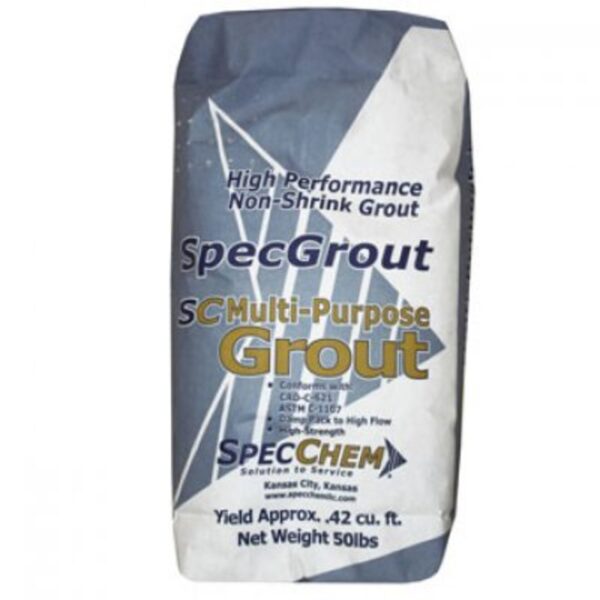Grout is the material used to fill gaps between tiles, bricks, and other masonry materials. Over time, grout can become dirty, stained, or contaminated with mold.
Properly cleaning grout is important for sanitation, aesthetics, and preventing deterioration of surrounding materials. Grout can be cleaned using various chemical solutions and tools.
Here we discuss some important techniques and tolls used for grout cleaning.
How to Clean Dirty Grout
Grout cleaning is very much important as grouting, for its maintenance and durability.
For lightly soiled grout, mixing baking soda and water into a paste and scrubbing with a grout brush may be sufficient. For moderate staining or dirt, using diluted bleach or hydrogen peroxide can help lift stains without harsh chemicals.
Professional-grade grout cleaners also contain active ingredients like sodium metasilicate to break down grime. Always pre-wet grout before cleaning to prevent absorbing and spreading stains.
Best Grout Cleaner Products
Many name-brand and environmentally safe grout cleaners are available commercially for heavy-duty grout cleaning.
Biodegradable oxygen bleach cleaners lift years of built up dirt and stains without toxic fumes. Acidic cleaners contain sulfamic or phosphoric acid to dissolve rust, lime, hard water deposits and grout haze.

When using any chemical grout cleaner, civil engineers should follow manufacturer precautions and test on an inconspicuous area first.
Grout Cleaning Machinery and Tools
Here are some of the most useful grout cleaning machinery and tools:
Grout Steam Cleaners
Grout steam cleaners use heated, high pressure steam to deep clean grimy grout lines. The heat helps loosen staining while the steam forcefully lifts out dirt from porous grout.
Steam cleaning grout is effective for sanitizing and whitening without using harsh chemicals. Handheld grout steamer tools allow cleaning in tight corners.

Grout Saws
Specialty grout saws feature diamond encrusted or carbide blades designed to cleanly and smoothly cut into hardened grout joints.
They are available in different widths to fit between different size tile or brick. Grout saws cut old grout so it can be removed and replaced with fresh grout.
Grout Brushes and Brooms
Stiff nylon or brass bristle brushes scrub concentrated grout cleaner into grout crevices, sweep up loose debris, and provide agitation for removing deep-set stains.
Small toothbrush styles fit tight spaces. Wide floor brooms clean long expanses of grout quickly.
Grout Removing Tools
Carbide grout rakes use multiple teeth to rake out damaged grout from joints between tiles or bricks.
Square removing tools embed into grout lines and fracture grout for removal. These tools prepare the area for re-grouting.
Wet/Dry Vacuums
Wet/dry shop vacuums remove standing water, lift away debris, and suck up solutions from the grout cleaning process.
The powerful suction reaches fully into grout crevices to leave a clean surface ready for recoloring or sealing.
The right machinery matched with hand tools give civil engineers optimal means to keep infrastructure grout pristine. Using proper procedures prevents harming surrounding masonry or tile materials.
grout cleaning methods
Here are some of the main methods for cleaning grout:
- Baking Soda and Water Paste – Mix baking soda and water to form a paste. Use an old toothbrush or grout brush to scrub the paste onto dirty or stained grout. The gentle abrasive action helps lift grease and dirt.
- Vinegar – Plain white vinegar works as a mild acid to dissolve hard water deposits, soap scum, and some stains in grout lines. Sprinkle vinegar liberally along the grout and allow it to sit for a few minutes before scrubbing.
- Hydrogen Peroxide – The bubbling action of hydrogen peroxide helps lift out stains. Pour it directly onto discolored grout lines. Allow to sit briefly before scrubbing with a stiff grout brush.
- Commercial Grout Cleaners – Specialty grout cleaners use acids or bleaches to deep clean and whiten grout. Carefully follow label directions on pre-treatment and dwell times for safe and effective use.
- Steam Cleaners – Handheld steam cleaners use very hot, pressurized steam to dislodge grime and germs from porous grout surfaces. Steady application avoids damaging grout.
- Re-Grouting – For old, cracked, or hopelessly stained grout, removing and replacing with fresh grout completely rejuvenates the area between tiles. Proper grout saws and removal tools are used.
Using the right methods and consistent grout maintenance keeps tile installations looking like new and prevents deterioration or damage to the grout joints. Routinely sealing grout also protects it.
Restoring Grout Color
Once grout is thoroughly cleaned, restoring its original uniform color may be desired.
This involves using a water-based grout dye or stain that permanently and evenly adheres within the pores. Epoxy-based treatments are also available to seal and preserve the restored color treatment for years.
Removing Mold from Shower Grout
Mold presents health hazards and can permanently damage porous grout. To remove mold, oxygen bleach solutions or lemon juice mixtures can kill and lift mold before pressure washing at a high heat.
Vinegar and tea tree oil solutions also disinfect grout prior to cleaning away mold stains. Waterproofing treatments can then be applied to prevent future mold growth.
Replacing Old Stained Grout
When stains or damage are beyond cleaning repair, completely replacing the grout may become necessary.
This involves raking out old grout with specialized tools, cleaning affected areas, taping off surroundings, and re-applying fresh grout.
Proper curing and sealing must then follow. In extreme cases, the underlying masonry may also require replacement.
Conclusion
Regular cleaning and maintenance are key to limiting extensive grout repair issues in infrastructure projects.
With proper personal protective equipment, the right chemical solutions, and specialty hand tools, do-it-yourself grout cleaning is feasible in many cases.
Civil engineers can utilize safer modern methods to keep grout lines clean, sanitary and structurally sound. Appropriate applications of chemical solutions, equipment, and restoration products resolve most common grout problems.





